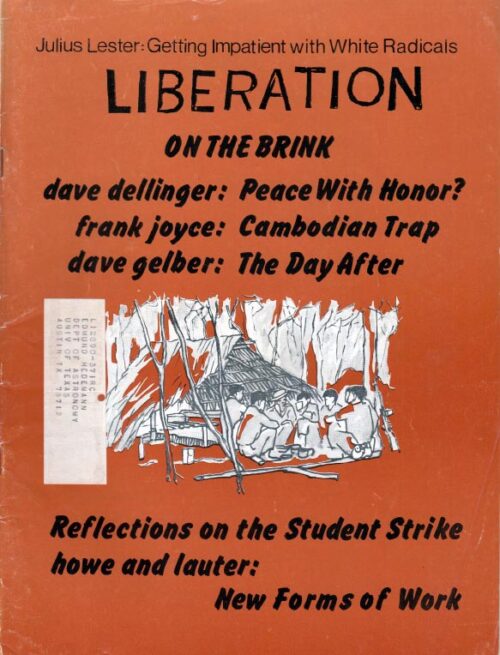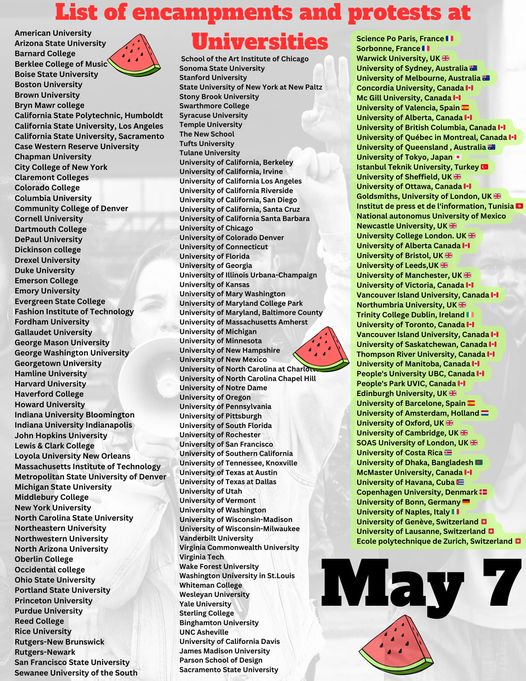Campus Protests: Echoes from 1970
As students demonstrate in support of Palestine and a ceasefire in Gaza on university campuses across the U.S. and beyond, this week’s WRL 100th History blog looks back at the student actions of May 1970. On May 1, student strikes broke out around the country following Nixon’s invasion of Cambodia and grew after the May 4th killing of four students protesting the war at Kent State.
The June 1970 issue of Liberation, which was published with support from WRL, included articles with reports and analyses of the strikes. The article by Jeremy Brecher opened with the text below. Fifty-four years later, much of what Brecher names are issues we see repeated today by college administrations, the government, the media….

From “Thoughts for the Next Crisis” by Jeremy Brecher, Liberation, June 1970
“The student upheaval of May 1970 marks a decisive change in the development of American social forces. It is essential to understand what happened, so that when the movement opens up again, tens of thousands of people will know how to push it still further.
The May movement was no mere protest against the Cambodian invasion. The Cambodian action was the pretext for action because it embodied everything that the students have learned to hate: the making of life-and-death decisions by a handful of men at the top; deceit; imperialism; racism; violence. The students’ instinctive reaction was to seize the only source of power available to them, their universities, and to fight — with force if necessary — against the police National Guard, and other instruments of state violence which tried to break them.
In the midst of the strike, a U.S. Congressman said that there must be a conspiracy behind the student actions, for how else could hundreds of thousands of students conduct the same kinds of struggle around the same basic demands on hundreds of different campuses?
Of course, anyone who participated in the May movement knows there was no conspiracy behind it, not even a centralized leadership; rather, the strike was a spontaneous and elemental response to contemporary American life, as embodied in the war (the Cambodian invasion) and oppression (the Panther trials). Yet the nature of the student strike will be difficult to understand, not only for those in power who believe that when the masses act there must be a conspiracy behind them, but also by those on the left who believe that only a centralized organization can lead mass struggles.
Who were the real leaders of the May strike? They were the Yale students who struck and occupied their campuses for several weeks before the strike became national. They were the Kent State students who out-fought the police, and then out-fought the National Guard until they later resorted to murder. They were the tens of thousands of students on hundreds of campuses who took the initiative and struck, in response to the invasion of Cambodia and the New Haven Panther trial. Their leadership created a movement a hundred times more significant than anything ever done by a self-proclaimed ‘vanguard party’ or by those who put themselves forward as ‘leaders and spokesmen.’
The student strike represents a type of struggle which has not been seen in the U.S. for more than thirty years. The most important thing about it was that it was ‘out of control’; there were no leaders who controlled it—which is to say, the people who acted themselves controlled the strike. Of course, the school administrations, the self-appointed spokesmen, and the like will eventually reestablish control of the students, but for virtually a week the students collectively controlled their own activity and their own campuses.”
After the Kent State shootings, WRL produced two flyers, one a call to action and to a May 9th demonstration in Washington, DC, “The War Comes Home”, and the other titled “Nonviolence is Not a Gimmick” was handed out at the DC demonstration and sent to membership with announcements for summer actions on the back.

Share



